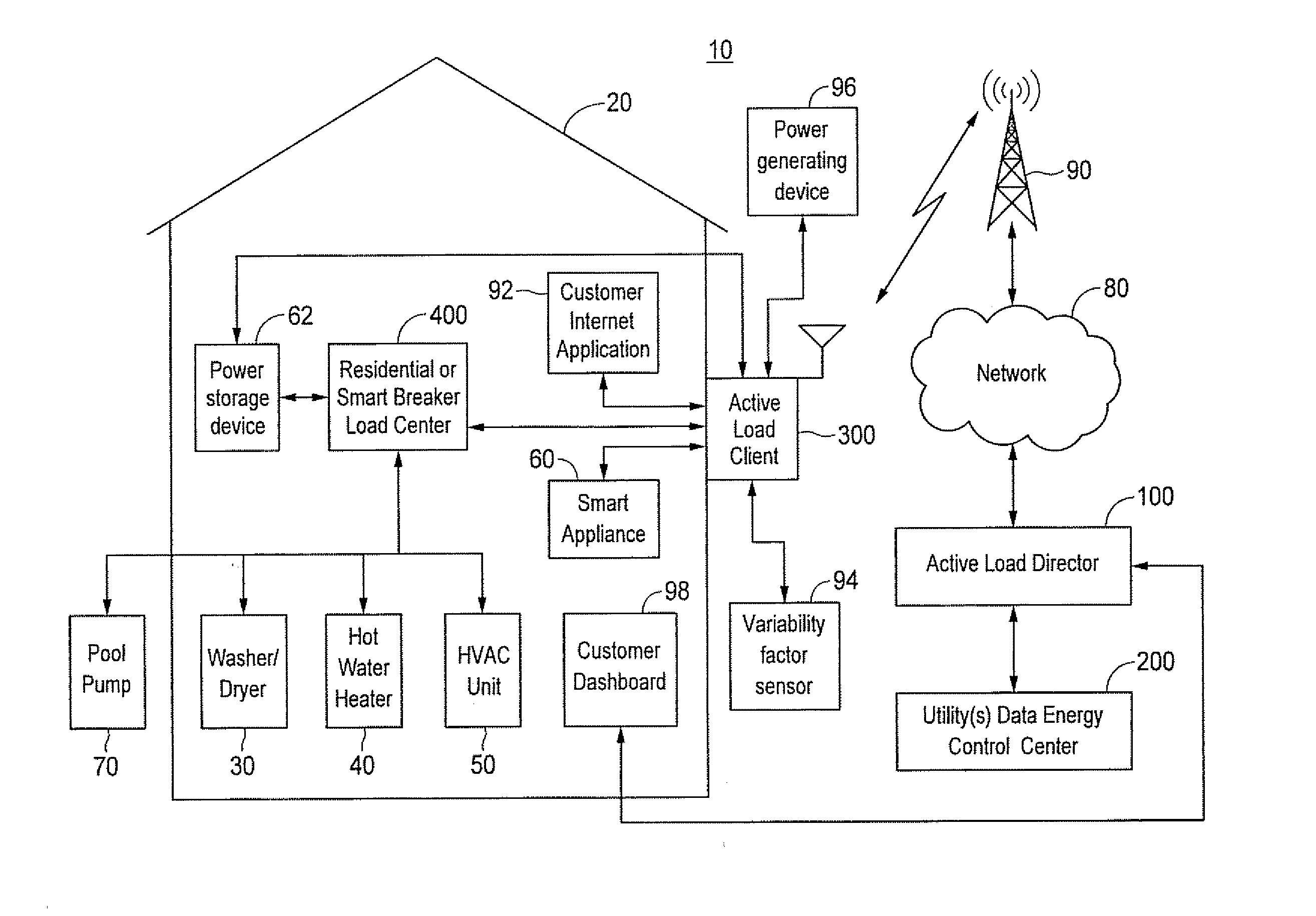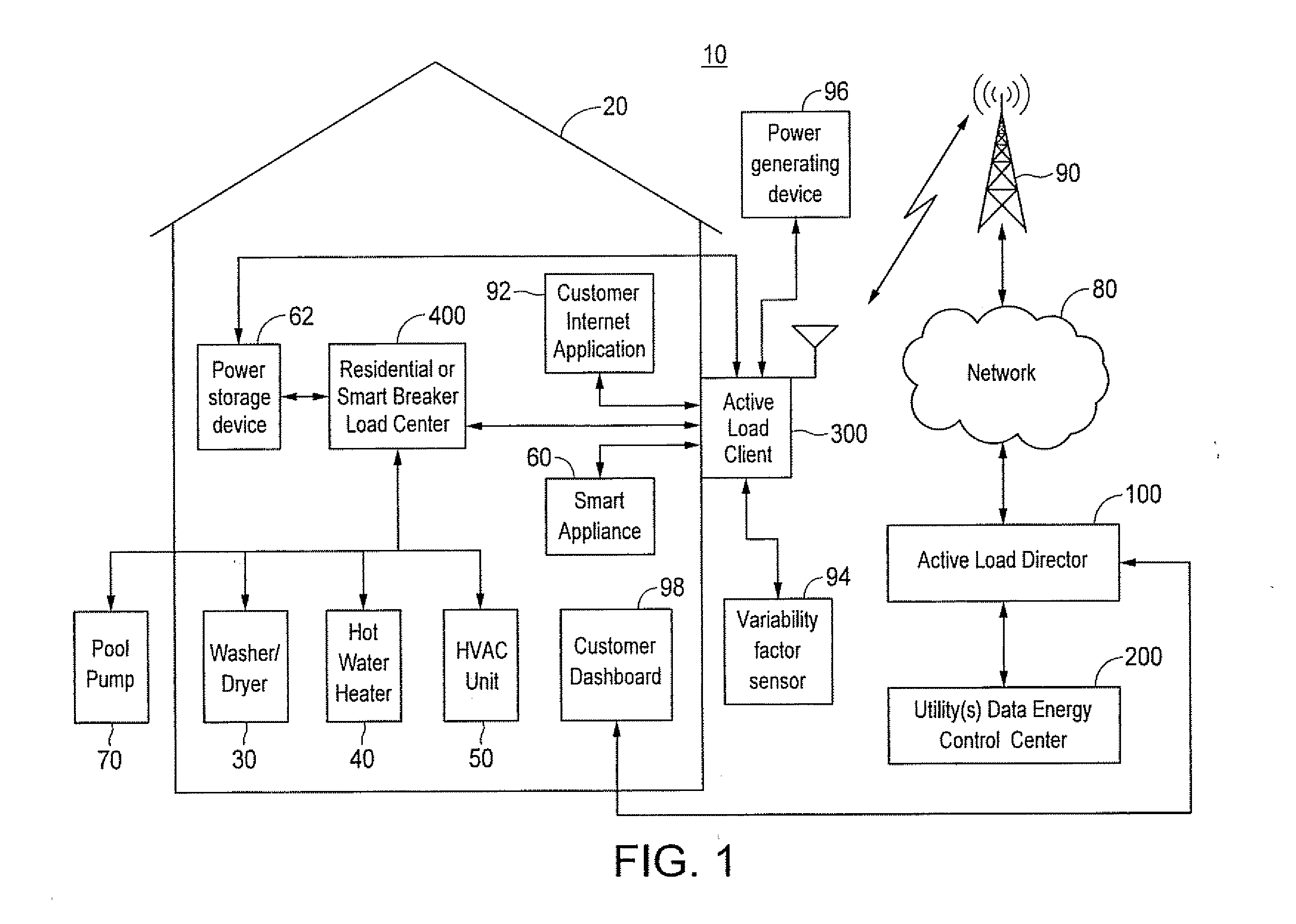System and method for determining carbon credits utilizing two-way devices that report power usage data
a technology of power consumption and reporting system, applied in the direction of liquid/fluent solid measurement, process and machine control, electric energy management, etc., can solve the problems of damage to the environment, no current technology for calculating power consumption and/or greenhouse gas emissions, and electric cooperatives and municipalities are not so fortuna
- Summary
- Abstract
- Description
- Claims
- Application Information
AI Technical Summary
Benefits of technology
Problems solved by technology
Method used
Image
Examples
Embodiment Construction
[0043]Before describing in detail exemplary embodiments that are in accordance with the present invention, it should be observed that the embodiments reside primarily in combinations of apparatus components and processing steps related to actively managing power loading on an individual service point, group of service points, and / or entire utility basis and determining carbon credits and renewable energy credits as a result of such active load management. Accordingly, the apparatus and method components have been represented where appropriate by conventional symbols in the drawings, showing only those specific details that are pertinent to understanding the embodiments of the present invention so as not to obscure the disclosure with details that will be readily apparent to those of ordinary skill in the art having the benefit of the description herein.
[0044]In this document, relational terms, such as “first” and “second,”“top” and “bottom,” and the like, may be used solely to disti...
PUM
 Login to View More
Login to View More Abstract
Description
Claims
Application Information
 Login to View More
Login to View More - R&D
- Intellectual Property
- Life Sciences
- Materials
- Tech Scout
- Unparalleled Data Quality
- Higher Quality Content
- 60% Fewer Hallucinations
Browse by: Latest US Patents, China's latest patents, Technical Efficacy Thesaurus, Application Domain, Technology Topic, Popular Technical Reports.
© 2025 PatSnap. All rights reserved.Legal|Privacy policy|Modern Slavery Act Transparency Statement|Sitemap|About US| Contact US: help@patsnap.com



